Willow in the Wind
Early on in my team builder career, I took a number of Project Adventure workshops. Part of their trainings always included "Trust" sequencing. Willow in the Wind, a "trust-pass exercise" was used "as a warm-up activity for the more dramatic falling sequence of The Trust Fall" (Cowstails & Cobras II, Rohnke, 1989). Willow in the Wind is now more than just a precursor to Trust Falls. I use it a lot when practicing spotting for wired low-element events or providing a "trust building" or low-to-the-ground "risk taking" activity. I've seen some incredible break-throughs during Willow in the Wind. Okay. So how does it work?
Going to my shelves, the earliest write up I could find is in the, More New Games book (1981) from the New Games Foundation. For historical purposes, I want to share their original description :
We form a small circle of about eight players standing shoulder to shoulder and facing the center of the circle with hands held at chest height, plans forward [will a bend at the elbows for flexing and extending]. Each of us should have one foot slightly behind the other for good balance [and a little bend in the knees]. We've just transformed ourselves into a summer breeze, and now all we need is a volunteer to be the willow. [I love this last line - ever been transformed into a summer breeze?]
The willow stands in the center of the circle with her feet together, her arms crossed over her chest, and her eyes closed [closing eyes is, of course, optional]. Keeping her feet stationary and her body straight but relaxed, she lets herself go, swaying from side to side, forward and back. Those of us in the circle support her with gentle pushes of our palms and provide summer-breeze sound effects. [Oh, I love this too - I'm adding the sound effects into my Willow in the Wind!] We should make sure that there are at least two people supporting the willow at all times [I like to say, "four hands on the willow at all times"], and that our gentle breeze does not become a howling hurricane.
In turn, each of us gets to be the willow in the wind, swaying to and fro, caressed by the breeze. This is a trust game. The player who is the willow gets the opportunity to trust the other players completely, and those of us who are the breeze get to feel the trust the willow has placed in us.
Such an elegant description - it makes me want to get a group together and try it right now! Along with the handful of additions, the description above is pretty much how I set up Willow in the Wind. Then, my role, walking around the outside of the circle, is to keep eyes and ears on the group to make sure they are being a gentle, supportive breeze. That's Willow in the Wind.
|
A Historical Aside
In the book, Cowstails & Corbers II (1989), Karl Rohnke shares a "second [willow in the wind] trust-pass sequence." I have never tried this one, but it looks pretty cool. Here's Karl's description: The circumference people sit down so that they are arranged hip to hip: i.e., closely scooched together. With the center person already set in a standing position (as seen in the picture from the book), the circle people all put their feet on top of the [willow's] feet, locking that person in place. |
DO NOT LEAD THIS ACTIVITY - this is my advise to you: Making an educated guess here, the reason I have never seen this done in the wild is that it's up there on the risk scale (standing spots do not lessen the experience, so why not stand) - facilitators discovered this early on. The sitting circle of players all need amazing core strength and their heads are now under a fall potential, which is not the best practice. I share this one to give you some historical perspective and a means to consider some particular safety issues we are aware of in the field - if an inherent risk can be mitigated, why not? And, there are some low elements still used today where craniums are under fall potential. These are among the program choices we make.
When facilitating this paired sequence, Rohan instructs each group in play to have a lead. This lead will be directing the steps of the process. The center participant will be facing the lead standing in the circle (you will see this in the video). When going through spotting commands, the lead checks each step and signals the spotters to respond. For example, when the willow (center participant) asks, "Spotters Ready?" the lead looks around the circle, checks readiness, then counts down, "3, 2, 1" and all respond, "READY!" [I really like how this lead brings unity to the process.] Then, when the willow says, "Falling!" the lead looks around for readiness one more time, then instructs the willow to, "Fall on." The willow will then be gently guided around the circle for about a minute, then the lead instructs the group to center the willow in place.
Now for the Lift Off. It's very important, during the introduction of this paired sequence, to let everyone know there will be a great deal of pressure placed on the upper body/shoulders of the one being lifted. So, if anyone is concerned about injury to this part of their body, they should not be lifted. And, when being lifted, they want to be lowered, they simply say, "Bring me down." On to the lift.
The lead will first ask the willow if s/he wants to be lifted. If yes, the lead asked the spotters to put hands on the willow. Hands are placed on the arms and upper back, under the shoulder blades of the willow. The lead then instructs the spotters to press, "In, In, In, In" until the lead feels like there is equal pressure around the willow (you don't want the willow to be pushed off to one side). The lead then says, "Up, Up, Up, Up" instructing the spotters to push up on the willow to the hight of the shortest person's reach. Finally, at maximum height, the lead says, "Down, Down, Down, Down" until the willow's feet are safely back on the ground. This "In, Up, Down" sequence is done smoothly without pause. Before the spotters "let loose" of the willow, the lead checks in to make sure s/he is stable. Then, high fives all around. This process is slow and steady with loud and clear communication.
Rotate other willows into the circle and change leads so there is an opportunity for participants to experience the different roles in the process. As facilitators, it is our role (job) to be mindful of the needs of our group - and the individuals within the group. Everyone is an important part of the process, even if they are not lifted.
Chris Cavert, Ed.D.
P.S. Thanks again Rohan! It was great learning from you my friend.

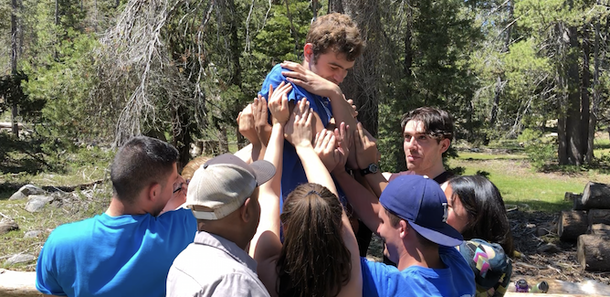
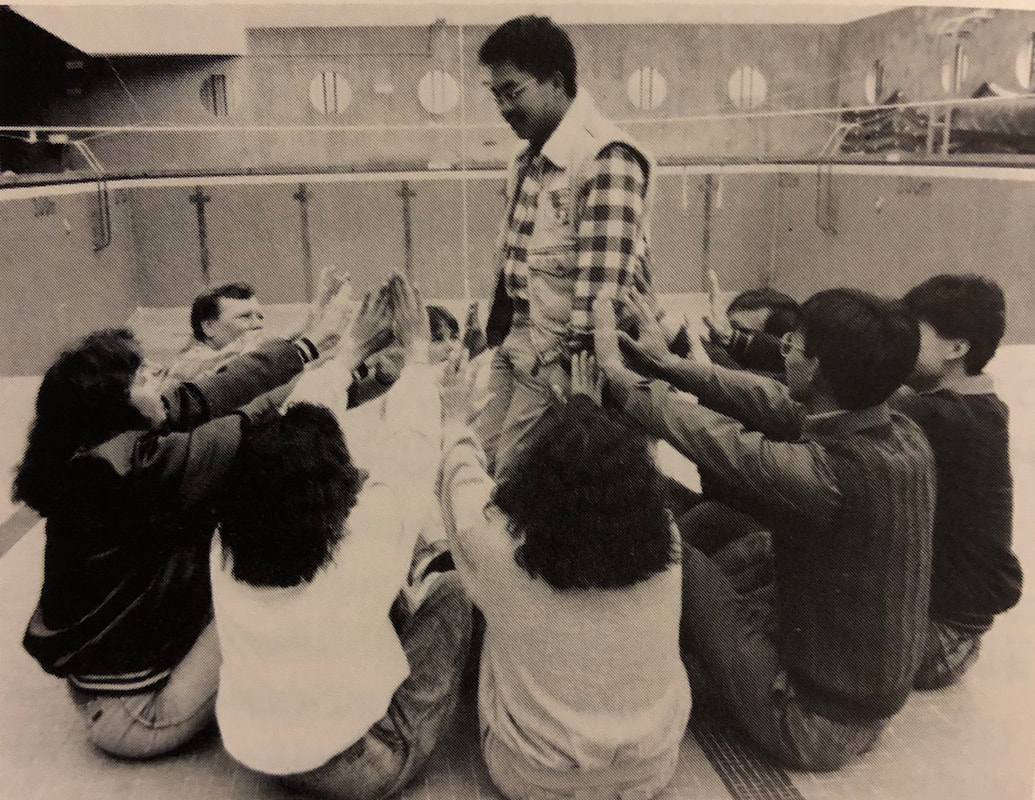

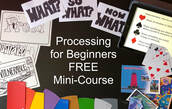
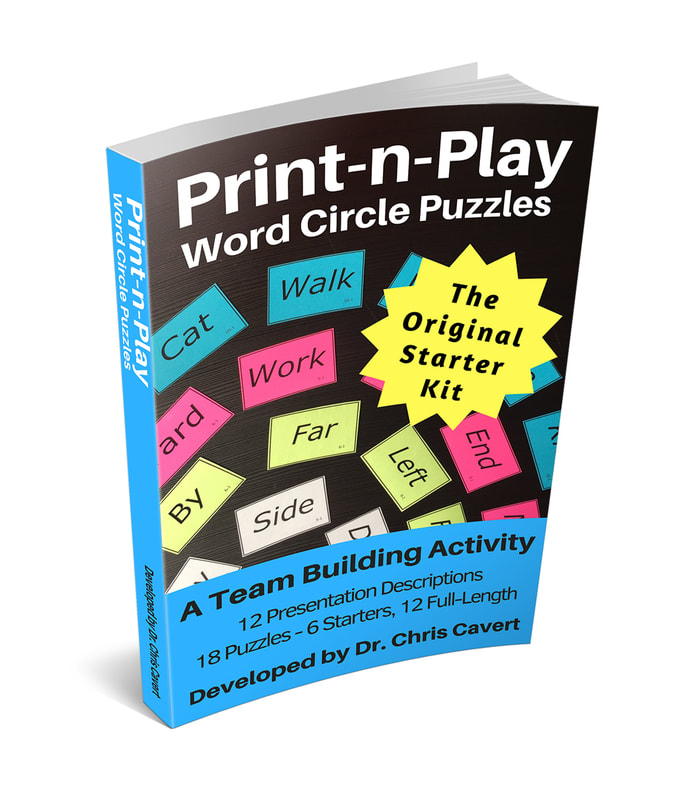

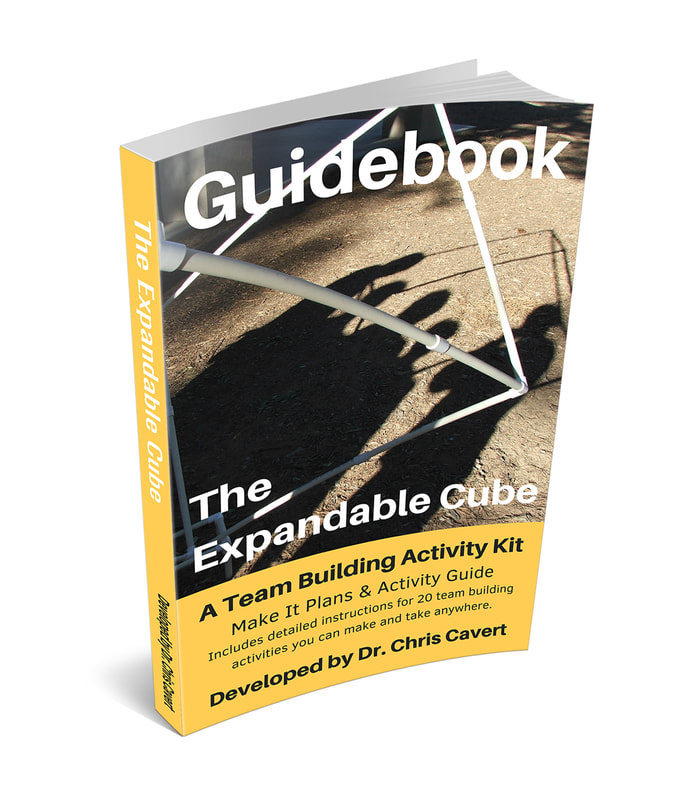
 RSS Feed
RSS Feed